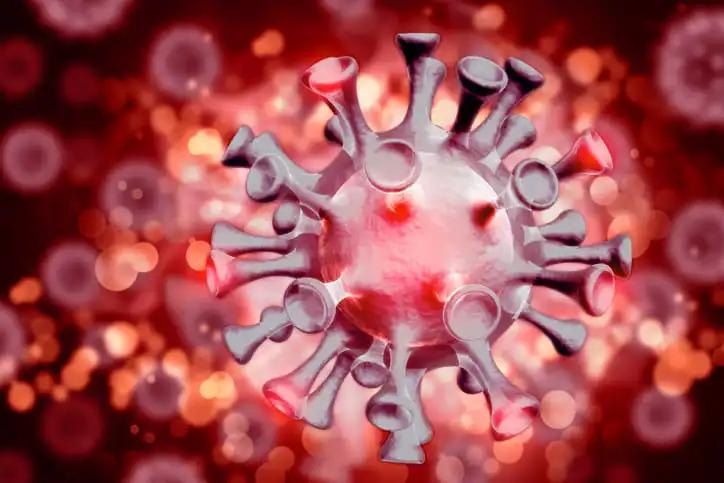KEY TAKEAWAYS
- The Phase 3 DREAMM-3 trial (NCT04162210) aimed to compare the efficacy of Belamaf vs Pd in adult patients with relapsed or refractory multiple myeloma (RRMM) at second relapse or later.
- The study enrolled 325 patients, with 218 receiving belamaf and 107 receiving Pd. Patients were randomized in a 2:1 ratio. The primary endpoint of the study was PFS.
- The study results showed that while belamaf did not demonstrate superiority in PFS compared to the Pd doublet, it did exhibit a longer median PFS and induced deeper and more durable responses.
Belantamab mafodotin (belamaf), an antibody-drug conjugate that targets B-cell maturation antigen, has been found to induce cell death through direct killing and immune-mediated mechanisms. The primary objective of phase 3 DREAMM-3 trial (NCT04162210) was to compare the efficacy of belamaf monotherapy against the combination of pomalidomide plus low-dose dexamethasone (Pd) in adult patients with RRMM at their second relapse (third line) or at a later stage. The open-label, randomized, multicenter trial aimed to investigate the potential benefits of belamaf as a monotherapy in this patient population.
Patients were randomly assigned (2:1) to receive either belamaf 2.5 mg/kg every 3 weeks (Q3W) or pomalidomide (4 mg orally [PO] daily on days 1–21 of each 28-day cycle) plus weekly dexamethasone (40 mg PO [20 mg if >75 years old]). The main focus was on progression-free survival (PFS) as the primary outcome. A total of 325 patients were enrolled in this trial ( (belamaf n=218, Pd n=107). The patients’ median age was 68 (38–90) years, of which 57% were male. The exposure duration for belamaf was 4.1 (0.4, 22.9) months, and for Pd, it was 5.3(0.4, 24.0) months. The median follow-up period was about 11.5 months for belamaf and 10.8 months for Pd. The median follow-up duration was 10.8 (0.0, 26.4) months for Pd and 11.5 (0.6, 24.2) months for belamaf. Belamaf demonstrated a longer median progression-free survival (PFS) of around 11.2 [6.4, 14.5] months), compared to Pd with a median PFS of approximately (7.0 [4.6,10.6] months). As per the stratified Cox model (p=0.558), both treatment groups have no statistically significant difference (HazardRatio [HR] 1.03 [95% CI: 0.72, 1.47]. As compared to Pd, Belamaf stimulated a deeper response. Belamaf showed a more durable median duration response compared to Pd. At the 12-month mark, the probability of maintaining the response was 0.768 (95% CI: 0.641, 0.854) for belamaf and 0.484 (95% CI: 0.258, 0.679) for Pd. The median PFS on subsequent line of therapy PFS2 for belamaf is 18.7 months(95% CI 14.5, Not Reached [NR]) and for Pd 12.7 months (9.3, 21.1). At 6 months, the PFS2 rate for belamaf is 73% and 76% for Pd. Furthermore, during this analysis, the Overall survival (OS) data wasn’t mature (37.5% overall maturity). The median OS was approximately 21.2 months (95% CI 18.7, NR) for belamaf, and for Pd, it was 21.1 months (15.1, NR) (HR 1.14 [95% CI 0.77, 1.68]; p=0.746). About 97% and 93% of patients have experienced adverse events (AEs). However, the safety profiles of belamaf and Pd were consistent with previous reports. The study concluded that Belamaf monotherapy did not show superior progression-free survival (PFS) compared to the doublet (Pd). Still, it had longer median PFS, deeper responses, and no new safety concerns. Further investigations are ongoing for belamaf in combination with other treatments.
Source: https://library.ehaweb.org/eha/2023/eha2023-congress/387899/meletios.dimopoulos.a.phase.3.open-label.randomized.study.evaluating.the.html?f=menu%3D16%2Abrowseby%3D8%2Asortby%3D2%2Ace_id%3D2489%2Aot_id%3D27922%2Atrend%3D4016%2Amarker%3D4176
Clinical Trial: https://classic.clinicaltrials.gov/ct2/show/NCT04162210
Meletios A. Dimopoulos, Vania Hungria, Atanas Radinoff, Sosana Delimpasi, Gabor Mikala, Tamas Masszi, Jian Li, Marcelo Eduardo Capra, Morio Matsumoto, Neal Sule, Mary Li, Astrid McKeown, Wei He, Shelley Bright, Brooke Currie, Julia Boyle, Joanna Opalinska, Katja Weisel
(Abstract release date: 05/25/23) EHA Library. Dimopoulos M. 06/08/2023; 387899; S199



